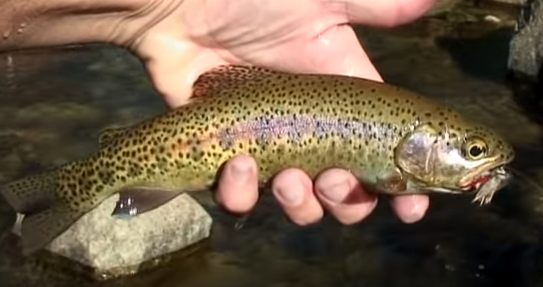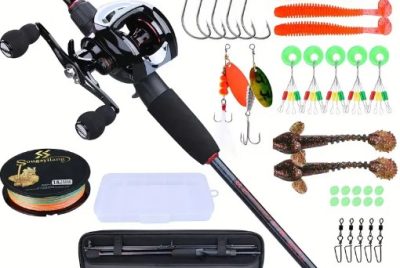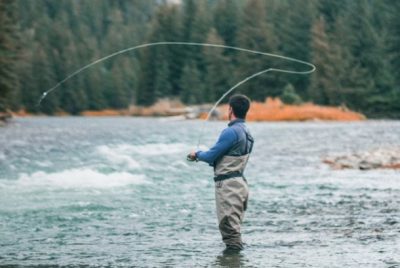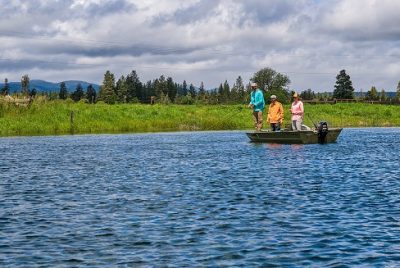Fly Fishing for Trout
Introduction
As an avid enthusiast and advisor in the world of fly fishing, I can’t help but share my deep love for the sport and the exhilarating pursuit of trout in the pristine waters. Fly fishing for trout isn’t just a hobby; it’s a passion that has led me to explore some of the most breathtaking landscapes and connect with nature in ways I never thought possible. In this article, I’ll walk you through the art of fly fishing for trout, offering valuable suggestions and reasons behind them.
Choosing the Right Gear
To embark on a successful trout fly fishing journey, the first step is selecting the right gear. Your choice of fly rod, reel, and line can make all the difference. Personally, I’ve found that a medium-fast action rod paired with a balanced reel and weight-forward line offers the versatility needed for various trout fishing scenarios. It’s essential to ensure your gear complements your casting style and target species.
Understanding Trout Behaviour
Understanding the behaviour of trout is fundamental to successful fly fishing. These elusive creatures are highly sensitive to their surroundings and exhibit different feeding patterns based on water temperature, season, and available food sources. By studying their behaviour, you can increase your chances of a fruitful day on the river.
Selecting the Right Flies
The world of fly patterns is vast, and choosing the right fly for the occasion can be a delightful challenge. It’s crucial to match the hatch and consider the local insect life. From dry flies to nymphs and streamers, having a well-rounded selection of patterns in your fly box is essential. I’ll even share some of my personal favorite fly patterns that have consistently brought me success.
Casting Techniques
Mastering the art of fly casting is an ongoing journey, but the basics are accessible to all. I’ll walk you through the essential techniques, including the overhead cast, roll cast, and false cast. With practice and patience, you’ll improve your casting accuracy and distance, making those challenging presentations more attainable.
Reading the Water
One of the most critical skills in fly fishing for trout is reading the water. Understanding river currents, underwater structure, and likely feeding areas is essential. I’ll share my insights on how to identify prime fishing spots and the thought process behind it.
Presentation and Drift
Once you’ve located your target, presenting the fly naturally is paramount. I’ll discuss the importance of a drag-free drift and offer tips on maintaining a stealthy approach. Trout can be incredibly skittish, so finesse is key when presenting your fly.
Setting the Hook
When that elusive trout finally takes the bait, setting the hook is a moment of pure adrenaline. I’ll describe the proper technique for setting the hook effectively, ensuring you don’t miss those crucial strikes.
Playing and Landing Trout
Playing and landing a trout requires finesse and patience. I’ll guide you through the process, sharing tips on how to tire out the fish while avoiding line breaks. Responsible catch and release practices will also be covered.
Fly Fishing Etiquette
Fly fishing is not just about catching fish; it’s about respecting the environment and fellow anglers. I’ll highlight the importance of etiquette on the river, including giving other anglers space and practicing Leave No Trace principles.
Dealing with Challenges
Fly fishing comes with its fair share of challenges, from changing weather conditions to spooked trout. I’ll address common obstacles and offer practical solutions based on my experiences.
Conservation and Sustainability
As stewards of the environment, fly anglers play a crucial role in conservation. I’ll discuss the importance of catch and release practices, respecting trout populations, and protecting our natural resources for future generations.
Best Trout Fishing Destinations
For those eager to explore new waters, I’ll recommend some of the best trout fishing destinations across the United States. Each location offers unique experiences and opportunities to connect with nature.
Tips for Beginners
If you’re new to fly fishing for trout, fear not! I’ll provide valuable tips and insights to help you get started on this incredible journey. Remember, it’s a learning process, and the joy is in the journey.
Conclusion
In conclusion, fly fishing for trout is not just a sport; it’s a lifestyle. The connection with nature, the thrill of the hunt, and the camaraderie with fellow anglers make it an unforgettable experience. I hope this article has ignited your passion for fly fishing and provided valuable guidance for your future adventures on the water.
FAQs
1: Is fly fishing for trout suitable for beginners? Yes, fly fishing for trout can be enjoyed by beginners. Start with the basics, practice your casting, and be patient with the learning curve.
2: What is the best time of year for trout fly fishing? The best time to fly fish for trout can vary depending on your location, but spring and early summer are typically prime seasons as trout become more active.
3: Do I need expensive gear to start fly fishing for trout? While quality gear can enhance your experience, you can begin with a reasonably priced setup and gradually upgrade as you become more proficient.
4: Are there any conservation tips for responsible trout fishing? Practice catch and release, handle fish with care, and follow local regulations to ensure the sustainability of trout populations.
5: Can I fly fish for trout in urban areas? Yes, many urban areas have accessible trout fishing opportunities in nearby rivers and lakes. Research local options and regulations before heading out.




